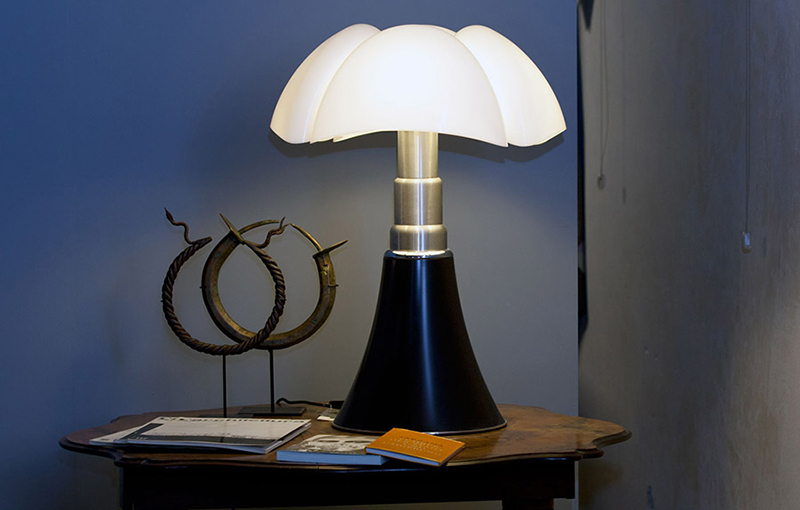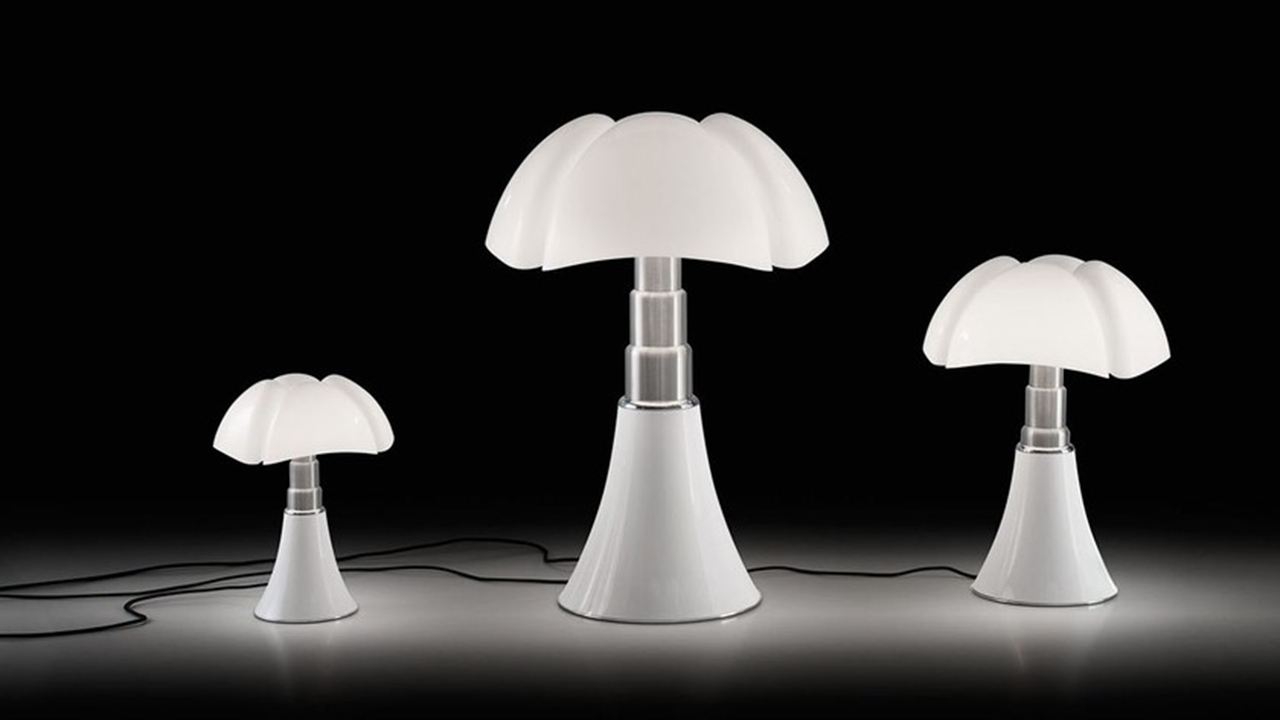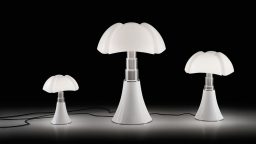Pipistrello Lamp
Gae Aulenti,
Pipistrello Lamp
Pipistrello is one of the most famous Italian design lamps of all time, symbol of the entire Martinelli Luce production. Despite being composed of a stem and lampshade like all traditional lamps, the designer Gae Aulenti managed to blend them with a unique touch that makes it immediately recognizable: a telescopic steel stem is inserted on the large bell base, which allows you to adjust the height, while the opal white methacrylate diffuser has characteristic ribs that remember the wings of a bat.
With a delicate appearance, this lamp recalls almost floral suggestions. It was designed by Gae Aulenti in 1965 conceiving it for a specific destination, the Olivetti showroom in Paris, but after a few years it was successfully introduced into mass production by Martinelli Luce.
The Pipistrello lamp has achieved great success all over the world, so much so that it is housed in the permanent collection of the MoMA in New York, and it was particularly appreciated in France. In fact, it can be found in many period photos even placed on the Elysée desk, next to several French presidents.
The original version of the lamp has generous proportions, and thanks to the 20 cm height variation allowed by the telescopic stem it can be placed on a piece of furniture or placed on the ground. Martinelli Luce has added to its catalogue variants in different sizes to meet every need, such as the Pipistrello Medium, which incorporates the classic sizes of the table lamp, or the Pipistrello Mini, suitable as a bedside lamp.
The original colour, of unsurpassed beauty, provides a refined contrast among neutral colours, with the black of the metal base, the bright shiny steel of the stem and the opaque white of the diffuser. Different chromatic variations of the base are also available today. Martinelli Luce then continually kept the Pipistrello lamp up to date with new lighting technologies, offering LED versions or with a cordless base.

I have never looked at a lamp from a technical point of view or as a machine to produce a light, but rather as a form in harmonious relationship with the context

